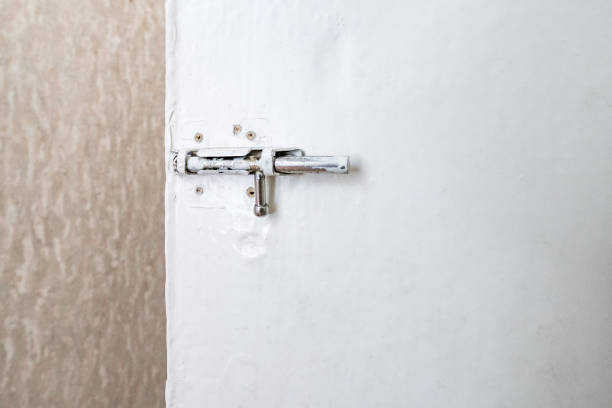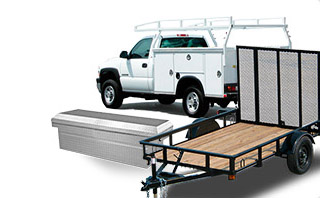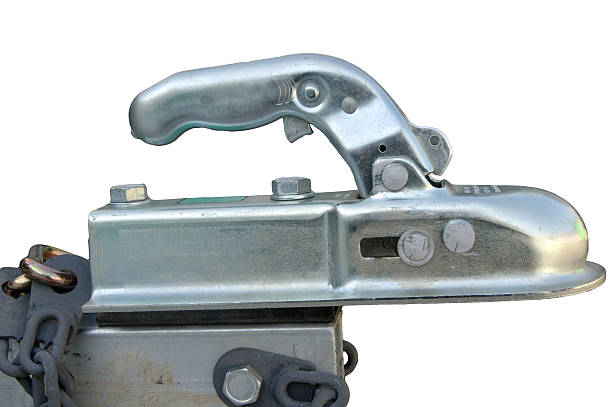Common Door Latch Problems and Solutions

Common Door Latch Problems and Solutions
Door latches are vital components of our everyday life, ensuring that doors close securely and stay shut when needed. These mechanisms are not only crucial for maintaining privacy and security but also play a significant role in energy efficiency by preventing drafts. However, like any mechanical system, they can experience issues over time due to regular use or external factors. Understanding the common problems associated with door latches and their solutions can help you maintain your doors effectively, avoiding the frustration of malfunctioning doors. This article will guide you through the typical door latch problems, explain the parts involved, and provide practical solutions to keep your doors functioning smoothly. Whether you're dealing with a residential or commercial door, these insights will prove invaluable.
Before diving into problems and solutions, it's essential to understand the door latch components and their functions. The door latch mechanism is part of the door lockset, which includes several components:
Latch Bolt: This is the part that extends into the door frame, holding the door closed. It must engage correctly with the strike plate to ensure security.
Strike Plate: The metal plate attached to the door frame with a hole where the latch bolt enters. It provides a solid anchor point for the latch bolt.
Faceplate: The metal plate on the edge of the door where the latch bolt protrudes. It protects the latch mechanism and ensures smooth operation.
Latch Assembly: Includes the latch bolt and related components housed within the door. This assembly is the heart of the latch mechanism, coordinating the movement of parts.
Knob or Lever: Used to operate the latch mechanism to open or close the door. It is the interface between the user and the latch, providing leverage for easy operation.
Backset: The distance from the edge of the door to the center of the knob or lever. This measurement is crucial for proper installation and operation of the latch mechanism.
Common Door Latch Problems
Misaligned Strike Plate
One of the most common issues with door latches is a misaligned strike plate. This happens when the latch bolt does not align correctly with the strike plate, making it difficult to close or lock the door. Misalignment can be due to settling of the house, loose screws, or an improperly installed door. Over time, even minor movements in the structure can lead to misalignment, causing stress on the latch mechanism and eventually leading to wear and tear.
Addressing this issue promptly is essential, as a misaligned strike plate can compromise the security of your door. In some cases, it might also lead to increased noise when opening or closing the door, which can be particularly bothersome in quiet environments. Regular inspections can help catch misalignments early, preventing more serious problems down the line.
Loose Door Knob or Lever
A door knob or lever that wobbles or feels loose can affect the operation of the latch mechanism. This issue typically arises from loose screws or worn-out components within the knob or lever assembly. In addition to impacting functionality, a loose knob or lever can be a safety hazard, potentially leading to accidents if not addressed promptly.
In many cases, tightening the screws is a simple fix, but if the problem persists, it might indicate deeper issues within the assembly. Regular maintenance and inspections can help prevent these problems, ensuring that knobs and levers remain secure and functional. In commercial settings, loose knobs can give a poor impression to clients or customers, making timely repairs even more critical.
Sticking Door Latch
A sticking door latch can be frustrating, often caused by dirt, rust, or misalignment. When the latch bolt doesn't retract smoothly, it can prevent the door from opening or closing properly. This issue can be particularly problematic in emergency situations where quick access is needed.
Sticking latches can also lead to increased wear on other components of the door, as users may apply excessive force to open or close it. Regular cleaning and lubrication can help prevent sticking, ensuring smooth operation. If left unaddressed, a sticking latch can escalate into more severe problems, requiring more extensive repairs or replacements.
Broken Latch Spring
The latch spring is responsible for retracting the latch bolt when you turn the knob or lever. If the spring breaks, the latch bolt may not retract, leaving the door stuck. This can be a major inconvenience, especially in high-traffic areas where doors need to function reliably.
Replacing a broken spring requires some technical knowledge, as incorrect installation can lead to further issues. It's important to use high-quality replacement parts to ensure longevity and proper function. Regular inspections can help identify worn springs before they break, allowing for proactive maintenance and avoiding unexpected problems.
Worn-out Latch Components
Over time, the components of the latch mechanism can wear out due to continuous use. This wear and tear can lead to a malfunctioning latch that doesn't operate as smoothly as it should. Regular use, exposure to the elements, and lack of maintenance can all contribute to accelerated wear.
Replacing worn components can restore functionality and extend the life of the door latch. It's important to regularly inspect the latch mechanism for signs of wear, such as difficulty in operation or unusual noises. By addressing worn components early, you can prevent more significant issues and maintain the integrity of your doors.
Solutions to Door Latch Problems
Fixing a Misaligned Strike Plate
1. Identify the Misalignment: Close the door slowly and observe where the latch bolt hits the strike plate. This will give you a clear idea of the direction and extent of the misalignment. 2. Adjust the Strike Plate: If the misalignment is minor, try loosening the screws and adjusting the strike plate's position. This simple adjustment can often resolve the issue without the need for further intervention.
3. Enlarge the Hole: For more significant misalignments, you may need to enlarge the hole in the strike plate or door frame using a file or chisel. This should be done carefully to avoid damaging the door or frame.
In some cases, adding a new strike plate with a wider opening can solve persistent alignment issues. Make sure to use the appropriate tools and techniques to avoid causing further damage to the door or frame.
Tightening a Loose Door Knob or Lever
1. Check for Loose Screws: Tighten any loose screws on the door knob or lever. This is often a quick and effective solution for minor looseness.
2. Inspect the Internal Components: If tightening the screws doesn't work, remove the knob or lever to inspect the internal components for wear or damage. Replace as necessary to restore proper function.
In cases where internal components are worn, it might be more cost-effective to replace the entire knob or lever assembly. Regular inspections can help identify issues before they become major problems, ensuring the continued functionality of your door hardware.
Resolving a Sticking Door Latch
1. Clean the Latch: Remove the latch assembly and clean it with a lubricant or rust remover to eliminate dirt and rust. This can often resolve sticking issues quickly and easily.
2. Check Alignment: Ensure the latch bolt aligns correctly with the strike plate and adjust if needed. Misalignment is a common cause of sticking, and addressing it can restore smooth operation. For persistent sticking issues, consider replacing the latch assembly with a high-quality, corrosion-resistant model. Regular lubrication and cleaning can help prevent future problems, ensuring that your doors operate smoothly and reliably.
Replacing a Broken Latch Spring
1. Disassemble the Latch: Remove the latch assembly from the door. This step requires careful handling to avoid damaging other components.
2. Replace the Spring: Purchase a replacement spring or latch assembly if necessary, and install it according to the manufacturer's instructions. Proper installation is crucial for ensuring reliable operation.
Consider upgrading to a more durable spring or latch assembly if breakage is a recurring issue. Regular inspections can help identify weakening springs before they fail, allowing for timely replacement and avoiding door malfunctions.
Dealing with Worn-out Components
1. Inspect the Latch Assembly: Remove the latch assembly and inspect each component for wear and tear. Look for signs of corrosion, damage, or excessive wear.
2. Replace Worn Parts: Purchase replacement parts for any components that show significant wear, such as the latch bolt or faceplate. Using high-quality replacements can extend the life of your door latch.
Regular maintenance and inspections can help identify worn components early, preventing more severe problems down the line. Consider keeping spare parts on hand for quick repairs, minimizing downtime and ensuring continuous operation.
Preventive Maintenance Tips
Regular maintenance can prolong the life of your door latch and prevent many common problems:
Lubricate Regularly: Apply a lubricant to the latch mechanism regularly to prevent sticking and rust. This simple step can greatly extend the life of your door hardware.
Check and Tighten Screws: Regularly check the screws on the door knob, lever, and strike plate, tightening them as needed. Loose screws can lead to a range of issues, from misalignment to full component failure.
Inspect for Wear: Periodically inspect the door latch components for signs of wear or damage and replace any parts that are worn out. Early detection of wear can prevent more serious problems and costly repairs.
By incorporating these maintenance practices into your routine, you can ensure the longevity and reliability of your door latches. Regular attention to these simple tasks can save you time and money in the long run, maintaining the security and functionality of your doors.
When to Call a Professional
While many door latch problems can be resolved with basic DIY skills, some situations may require professional assistance:
Complex Misalignment: If the door or frame needs significant adjustment, a professional can ensure it's done correctly. Attempting complex adjustments without the proper skills can lead to further issues.
Extensive Wear or Damage: When multiple components are worn or damaged, a professional can quickly replace them to restore functionality. They have the tools and expertise to handle complex repairs efficiently.
New Installations: For new installations or complete replacements, hiring a professional ensures that everything is installed correctly and operates smoothly. Proper installation is crucial for long-term reliability and security.
Calling a professional can save you time and ensure the job is done right, especially for complex or large-scale repairs. Professionals can also provide valuable advice on maintenance practices and potential upgrades to improve the performance of your door hardware.
Conclusion
Door latches are integral to our daily security and privacy. By understanding the common issues and their solutions, you can maintain your door latches and ensure they continue to function effectively. Whether it's adjusting a misaligned strike plate or replacing a broken spring, these solutions will help you resolve typical door latch problems. Regular maintenance and timely repairs will save you time and money, keeping your doors in top condition.
By staying proactive and attentive to the condition of your door latches, you can avoid unexpected issues and ensure smooth, reliable operation. Whether you're handling minor repairs yourself or calling in a professional for more complex tasks, understanding your door hardware is the first step to effective maintenance and repair.






